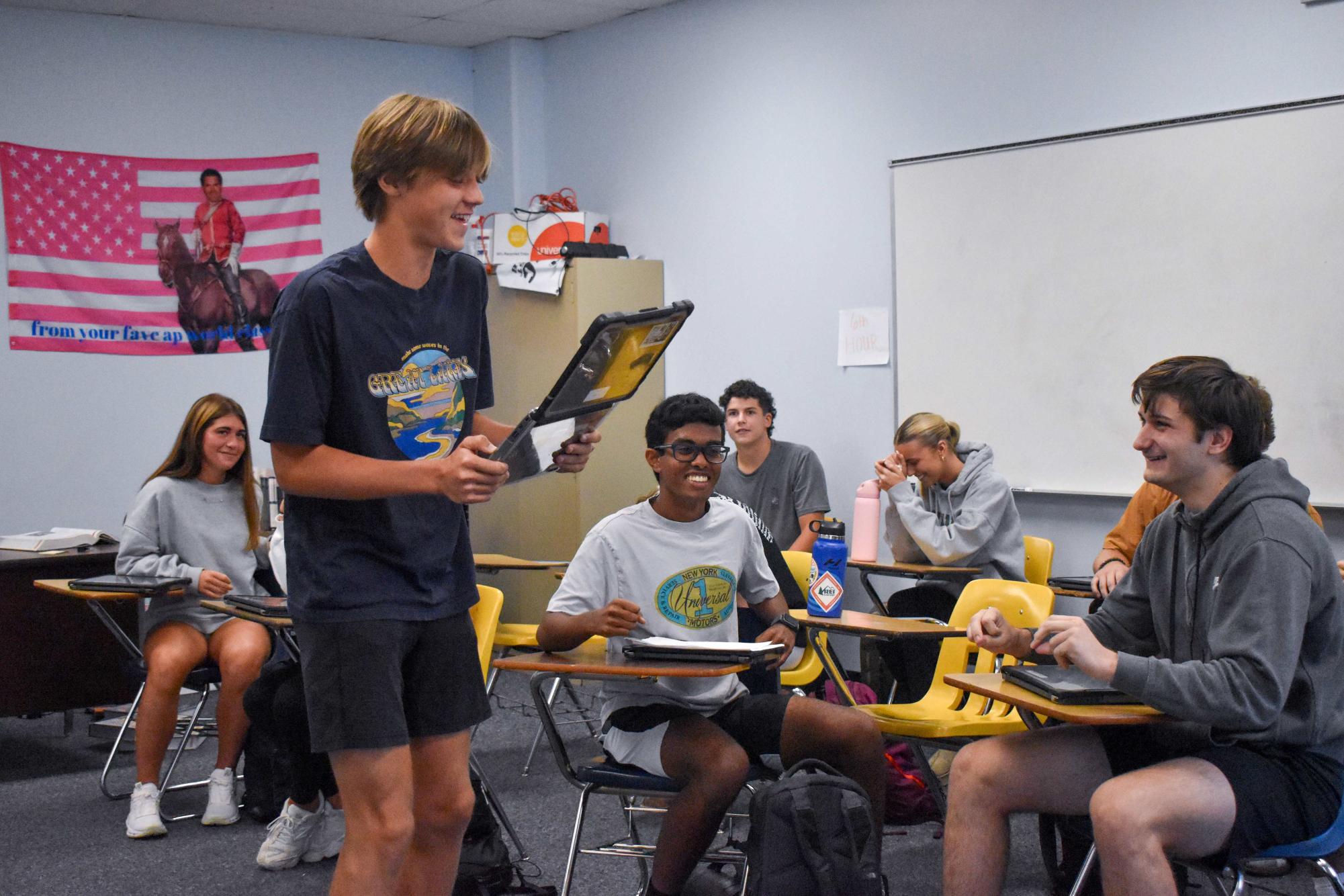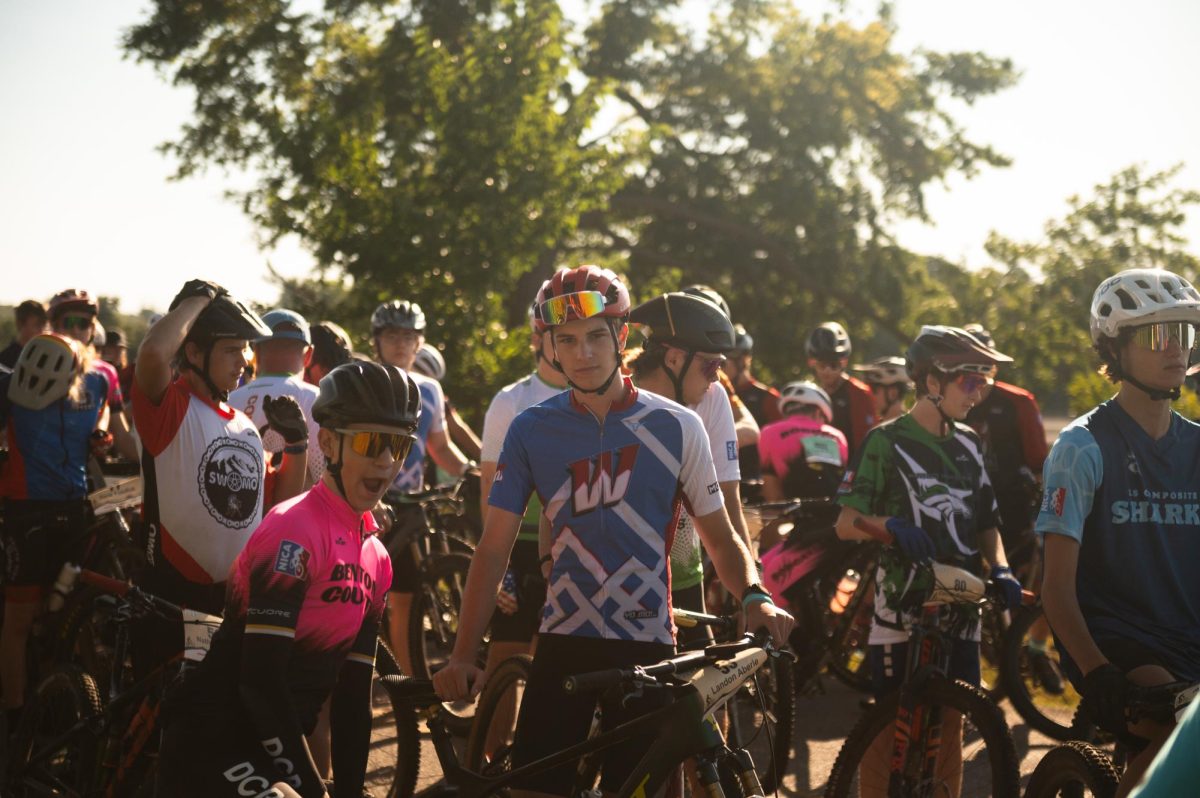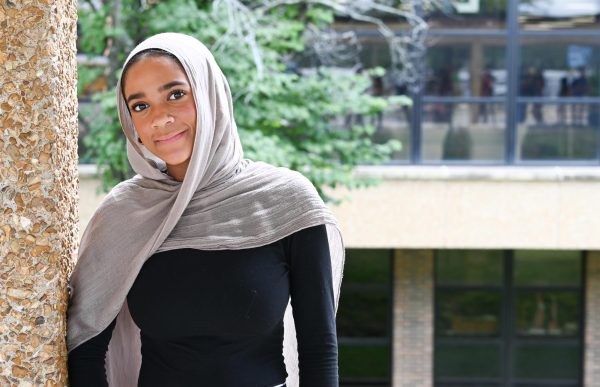From down the hall, bursts of laughter and applause spill out of a classroom unlike a typical history class. Inside, instead of sitting through a lecture, students are debating, performing, and presenting as historical figures, all as part of a class that reimagines what learning history can look like: U.S. History Integrated Project-Based Learning (IPBL). Although Parkway offers several programs similar to this course, this is the first true Integrated Project-Based Learning class to be introduced.¬Ý
Unlike the traditional two-semester U.S. History class, this new course condenses the curriculum into a single semester and replaces many of the standard tests with projects and more collaboration throughout the classroom. U.S. History IPBL is centered around student-driven projects rather than memorization and note-taking. For both students and teachers, that’s been a major shift.
Social studies teacher Jim Hermann decided to take on this class this year and has been learning the ropes of the course.
‚ÄúI set it up to where projects count for half of their grade overall, [and then] I still do my [normal] quizzes and tests, but I have to weigh most of the grades toward projects. That’s how it’s different,‚Äù Hermann said.
This new structure has allowed for some creative and dynamic assignments. One of the class‚Äôs major projects this semester is a mock trial of President Harry Truman for the decision to drop the atomic bomb on Hiroshima and Nagasaki.¬Ý
“The class is divided into the prosecution, the defense and the judges. They had to go through a list of documents to prepare their case, and then [they] tried the case in class. It’s one of four big projects we do throughout the semester,” Hermann said.
For junior Sophie Ganson, one of the students enrolled in the class, the shift to project-based learning has been a refreshing change that allows her to explore ideas in her own way.
“[I like] the creative freedom that we get [when] doing our projects. We don’t have a super strict rubric about it, which is nice. We get a lot of creative freedom to do whatever we want,” Ganson said.
That creativity, however, comes with a condensed timeline. Because the course only lasts one semester, students cover nearly all of the content in half the time.¬Ý
“It is pretty fast-paced right now [because we’re] trying to fit everything in [this semester], but the workload’s still manageable; we just have to stay on top of it,” Ganson said.
While the format has been mostly refreshing to students, the adjustment hasn’t been without its challenges for Hermann. With so much of the grade focused on projects, he’s noticed a shift in how students approach the assessments.
¬Ý‚ÄúI‚Äôve noticed less engagement when it comes to studying for quizzes and tests. They feel like [the] projects will bail them out at the end of the day. It has been difficult figuring out how to keep it project-based but give quizzes and tests a little more weight,‚Äù Hermann said.¬Ý
Despite this learning curve, both students and teachers have found the class has its rewarding parts. Popular projects include the “Bachelorette: Progressive Era Edition,” where students in a group adopt the role of a notable figure from the Progressive Era and present their qualities to a judging panel of students. Similar projects have kept students engaged and made teaching the course more enjoyable.
“The [Bachelorette project] was actually quite cool. I bet most of the kids would say it’s their most memorable project [so far],” Hermann said.
The progress of the course so far has Hermann already thinking ahead about what’s next as far as his curriculum.
“I realized halfway through the year that I have a lot more latitude with the topics I can pick. Next semester, I might replace one unit, maybe something more modern in U.S. history,” Hermann said.
The U.S. History IPBL class is reshaping how Parkway West students experience history, offering a more hands-on approach to learning. Students work together on projects that connect historical concepts to modern issues, trading memorization and note-taking for collaboration and critical thinking. The result is a classroom environment that feels more interactive and meaningful, offering a glimpse of how this method could enhance learning in other courses beyond history.
“[The class] is very different, but in a good way. The projects make it fun, and it actually sticks with you,” Ganson said.



![Freshman Daphne Stokes looks at a table with Veterans Day flyers and information on Nov. 11. Stokes, along with other West High students, like senior Alexander Lewinski, passed by the table in the cafeteria with army recruitment information and giveaways for students to observe during lunch. “Talking with [the recruiters] has definitely helped me [find] where I wanted to go, more than anything else,” Lewinski said.](https://pwestpathfinder.com/wp-content/uploads/2025/11/DSC_1227-2-1200x800.jpg)
![Helping a customer, print room assistant Gretchen Williams operates her booth at the West High Craft Fair from Oct. 25-26. This was Williams’ first time participating in the Craft Fair with her new craft shop, Gs Beaded Boutique. “People have always said, over the years, ‘you should open something.’ [I replied that] I would rather just make [my crafts as] gifts for people. I just started [the online store] up, and it's been okay. I'm always surprised [by] how many views I get and [the] people from different states buying things; somebody from Alaska bought something the other day.”](https://pwestpathfinder.com/wp-content/uploads/2025/11/DSC0451-2-1200x799.jpg)
![Gesturing toward the club’s name on the board, Global Youth Aid co-president year Daniah Alsagheer discusses upcoming service projects with members during a meeting on Oct. 30. “We might be one club at one school, but together, we’re [part of] something much bigger,” Alsagheer said.](https://pwestpathfinder.com/wp-content/uploads/2025/11/DSC00949-1200x800.jpg)
![Focused on providing exceptional service, sophomore Darsh Mahapatra carefully cleans the door of a customer’s car. Mahapatra has always believed his customers deserve nothing less than the best. “[If] they’re trusting us with their car and our service, then I am convinced that they deserve our 100 percent effort and beyond,” Mahapatra said.](https://pwestpathfinder.com/wp-content/uploads/2025/10/DSC_0018-1200x800.jpg)
![Sophomore Aleix Pi de Cabanyes Navarro (left) finishes up a soccer game while junior Ava Muench (right) warms up for cross country practice. The two came to Parkway West High School as exchange students for the 2025-2026 school year. “The goal for the [exchange] program is to provide opportunities for both Parkway students and our international exchange students to learn about other cultures, build connections and become confident, capable, curious and caring — Parkway’s Four C’s — in the process,” Exchange Program Lead Lauren Farrelly said.](https://pwestpathfinder.com/wp-content/uploads/2025/10/Feature-Photo-1200x800.png)

![Gazing across the stage, sophomore Alexis Monteleone performs in the school theater. The Monteleone family’s band “Monte and the Machine” has been releasing music since 2012, but Alexis started her own solo career in 2024 with the release of her first single, Crying Skies. “My whole family is very musical, [and I especially] love writing [songs with them],” Monteleone said.](https://pwestpathfinder.com/wp-content/uploads/2025/09/DSC7463-1200x798.jpg)
![Amid teaching a lesson to her AP Calculus BC class, Kristin Judd jokes alongside her students in their funny remarks. Judd has always enjoyed keeping the mood light in her classroom, along with on the volleyball court. “[I enjoy] that side talk where you see [or] overhear a conversation and chime in, or somebody says something funny,” Judd said.](https://pwestpathfinder.com/wp-content/uploads/2025/09/image-1200x730.jpg)
![Eyeing the ball, junior Ella McNeal poses for her commitment pictures at Clemson University. McNeal’s commitment comes after months of contact with top Division 1 soccer programs. “ It has taken a lot to get to where I am, but I know that [what] I've already been through is just the beginning, and I can't wait for what is to come,” McNeal said.](https://pwestpathfinder.com/wp-content/uploads/2025/09/IMG_4926-1200x900.jpeg)

